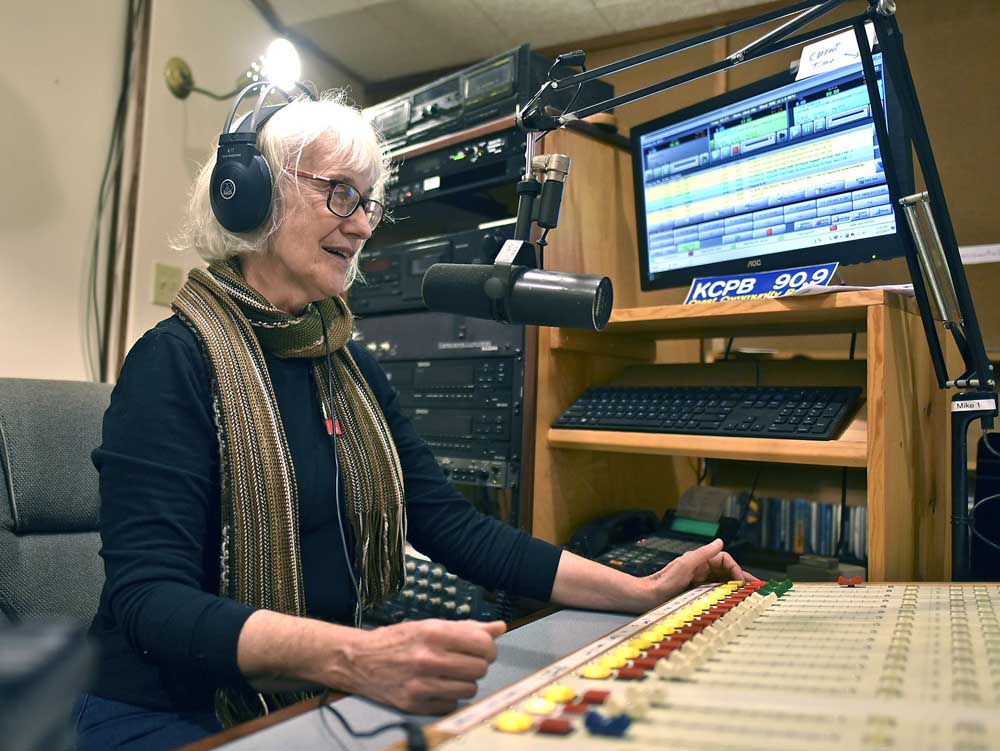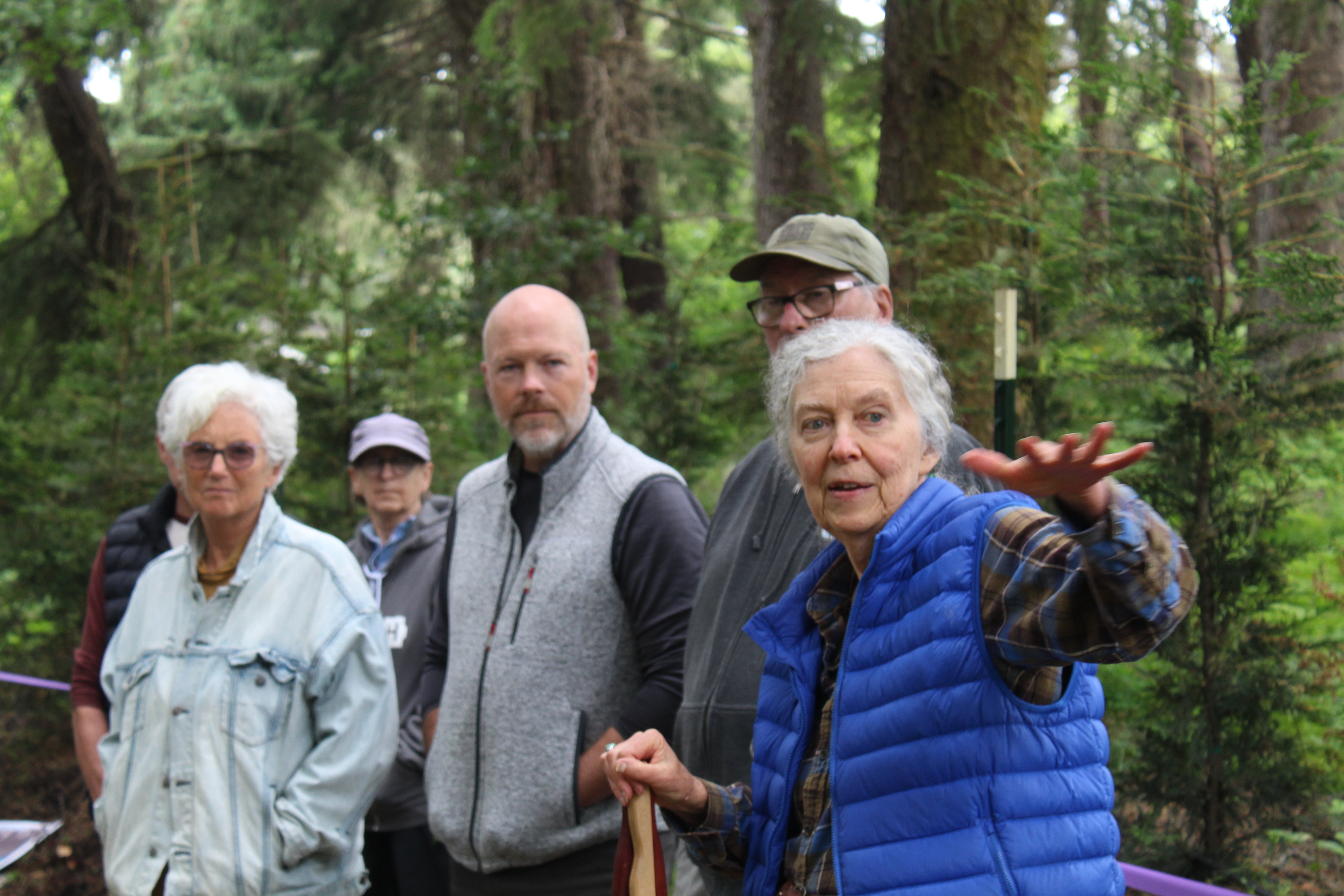Concussions: Changing the lives of athletes in an instant
Published 4:00 pm Sunday, November 24, 2013
A late hit knocked Andrew Miller to the turf during a Friday night football game in 2011.
Trending
The freshman quarterback for Knappa High School threw the ball downfield for a touchdown as he received helmet-to-helmet contact from defenders and hit his head against the ground.
When he got to the sidelines, Miller held his ribs and his injury seemed to pertain only to his chest.
But it was soon apparent that he wasnt himself.
Trending
As each minute went by instead of getting better and more coherent he started slipping, said his father Jeff Miller, who was assistant coach at the time.
Andrew Miller has no memory of the event. For a year after the concussion, he made weekly visits to Portland to see specialists. As a student, his math skills were significantly affected and for a while he had trouble concentrating while reading.
Its been a life-changing event, Jeff Miller said.
Concussions in sports have received greater attention in recent years. It is a new age of awareness for professional sports and at the high school level in Clatsop County.
It used to be called getting your bell rung in football. The coach might ask the player how many fingers he was holding or some smelling salts might be administered. But the protocol for treating the injury has changed.
Much is still to be determined about how concussions affect youths. An extensive study published recently by the Institute of Medicine and National Research Council found a lack of data on the subject. Researchers examined the injury among athletes between 5 and 21 years old and suggested creating a better way for collecting information on the effects as well as for recording the number of cases.
Symptoms and effects
Known clinically as mild traumatic brain injury or MTBI, concussions are not unique to playing football which is considered a collision sport but also contact sports like soccer, volleyball and basketball.
The symptoms of a concussion can be immediate or appear gradually. When it is first sustained, a person can have a headache, might temporarily lose consciousness, feel confused, forgetful of the event, dizzy, have ringing in their ears, be nauseous, have slurred speech, feel tired or have blurry vision.
In the hours and days that follow the event, a person may lose memory or have problems concentrating, is irritable, sensitive to light and noise, have sleeping problems, depression and their sense of taste and smell might be altered.
Chad Rankin, a certified athletic trainer at Columbia Memorial Hospital, said reporting any one of the symptoms requires the appropriate action. When those symptoms persist and linger, then there really is no doubt, he said about sustaining a concussion.
Doctors describe the number of neurons in the brain as being more numerous than the stars in the sky. A concussions effect on neurons in the brain, which carry information through electrochemical signals, make concussions a difficult injury to treat. Each one is unique.
Its the most complex injury you can suffer because it just takes a lot of recognizing whats going on and its frustrating actually, Rankin said.
Sometimes the worst concussions are when the impact is unexpected, Rankin said, and the person doesnt have the ability to see it coming. It doesnt look like a big hit, but can still cause trauma.
Andrew Miller suffered a concussion because of rotational acceleration, according to his doctors, which is caused by a hit to the side of the head rapidly turning the skull and brain inside. His was likely compounded by his head hitting the ground afterward. He had also had a previous concussion from falling in a basketball game.
In the middle of the football game, Andrew Miller was taken to CMH and two years later can only remember warming up before the game. He doesnt remember going to the hospital and was in a state of confusion between 7 p.m. and midnight.
Its turned into a longterm ordeal in this case, said Jeff Miller. They went routinely to Oregon Health & Science University in Portland the entire first year. Andrew Miller was out of school much of the time.
Jeff Miller says theres a new normal for his son. Although he was enrolled in Algebra 2 as a freshman, Andrew Miller struggled with his sisters fourth-grade homework. Reading was at a third-grade level at first because it was hard for his eyes to track. Hes had to relearn prior knowledge. Sometimes missing information presents a hole when learning something new.
Andrew Miller went to physical therapy, speech therapy and occupational therapy for the first year. There was a lot of rehab involved, said Jeff Miller.
Hes worked hard I credit this school and the teachers and come back a long ways and regained some of those skills, Jeff Miller said about relearning information.
Its Andrew Millers junior year at Knappa High School and its still an ongoing process. Id say its mostly focusing, he said.
He hasnt been cleared to play football, but is able to play basketball and baseball.
Testing
Rankin was hired by CMH in August 2011. He worried that student athletes with concussion symptoms were returning to play too early. After my first year here, it was a need that I saw needed addressing, he said.
Doctors were taking different approaches for each individual concussion case. Things werent uniform, said Rankin, who received an award for health care professional of year in May after being nominated by area coaches. Things were not only confusing to myself, but for the athletic directors and coaches.
The hospital donates Rankins time and services to Clatsop County schools at no cost to the districts. He has worked with coaches to help them better recognize concussions when they happen. Rankin oversees Immediate Post-Concussion Assessment and Cognitive Testing (ImPACT) tests for Knappa, Astoria, Warrenton and Seaside high schools. CMH paid for the licensing of the tests at the schools this year, he said.
The widely used ImPACT tests quantify an athletes brain function by compiling data on their reaction times, memory and awareness. At the beginning of each season, Rankin administers the computer-based test.
In the last two school years or four sports seasons they have conducted about 800 ImPACT tests for student athletes in sports at the four high schools. Last year, they tracked 42 concussions with it, Rankin said. This year, so far, its been about 24. If a concussive event is sustained, the initial scores are compared with a post-test and the evaluation can help determine whether an athletes brain is functioning at the same level. Rankin said they ask whether the athlete is experiencing any of the 22 concussions symptoms during the evaluation.
Its not a diagnostic tool, but its a way to give you objective evidence, especially when a kid is trying to understate their symptoms in an effort to return to play, said Rankin.
I think its an effective tool to help evaluate whether a student athlete has actually suffered a concussion or is just having headaches, said Howard Rub, athletic director at Astoria High School and head football coach. We really feel good that we have the ImPACT tests to help better evaluate and to help make sure our kids are safe.
After the post-test for brain function, return to play is then a waiting game. Any activity that might make symptoms worse even sitting in front of a computer or television screen are not advised during a period of rest and recovery.
When the symptoms go away during the period of rest as well as having a passing ImPACT score returning to practice and games can be a slow process. The first two days they dont want a lot of head movement, meaning they are only allowed to do stretching, stationary bike riding and light weights. The next day theres more physical activity and the next is about getting the heart rate up. On day five, students can fully return.
If they have any return of any concussive-like symptoms with exertion on any one of those days, then we stop immediately, Rankin said. The return goes on hold and after 24 hours of being symptom free again, students return to the day they were last on. CMH referred three students this year to see a concussion specialist at OHSU.
Im glad we have that tool, said Jerry Boisvert, head coach of girls soccer at Astoria High School. I think more parents and kids are going to do it. Its made an absolute change.
Returning to play
Reporting the brain injury and complying with treatment is important for young athletes recovery, according to the Institute of Medicine and National Research Council study. They found that young athletes who returned to competition too early were likely to have a bigger risk for longterm recovery or greater negative effects if they had another brain injury.
Students, in many cases eager to return to participating, might under-report symptoms when they want to come back to the sport. Rankin said its hard sometimes telling students and their parents that they cant play, but that the period of rest is important.
When theyre not truthful and they take another event to the head before reporting that first one, thats when they have concussive symptoms that last much longer, he said.
Certain sports
In the same study of student athletes, researchers determined male high school and college students playing football, ice hockey, lacrosse, wrestling and soccer reported the greatest number of concussions in the United States.
For female athletes, the highest tended to be reported from playing basketball, lacrosse and soccer.
Girls soccer at Astoria High School was unusual this season in that some players had concussions off the field and were unable to return until they healed. Rankin said he evaluated at least five girls and boys soccer players for concussions this year at Astoria and Seaside high schools.
This year has been a learning situation and almost eye-opening with this new awareness and how troublesome it can be for kids, said Boisvert, who has played and coached soccer for the past 50 years.
Beginning in 2014, referees for youth and adult soccer associations will be required to take a course in recognizing concussions and provide a certificate of completion to the Oregon Referee Committee. State legislators passed a bill in June that requires the training for referees.
Boisvert said hes learned just how different the injury is compared to something like a pulled muscle. A lot of caution is taken now and awareness is heightened, he said.
In soccer, going for the ball in the air can be a cause of the injury. Head-to-head clashes have always been a concern, Boisvert said.
Heading the ball is a big part of soccer. Boisvert said he trains his players to head the ball correctly.
Some soccer players are beginning to wear padded head gear as protection from concussions. But the committee conducting the Institute of Medicine and National Research Council study found that there was a lack of scientific evidence to support claims that the head gear for soccer players reduces the risk.
Boisvert said he believes they might soften the blow, but is unsure whether they do anything other than make parents more comfortable.
No true protection
The committee also said there was limited information that the latest sports helmets lessen the risk of concussions.
The football helmet has evolved from leather to plastic to now a polycarbonate shell at the professional level. The inside of the helmet has changed as much as the outside, with more padding being added and companies developing helmet liners with Kevlar, the synthetic material used in bulletproof vests. Some companies have even designed padding to go around the outside of the helmet. But claims that new designs prevent or reduce concussions havent been fully tested.
No helmet can ever or will ever be concussion-proof, said Rankin. The reason: the brain moves around within the skull. No helmet can keep it from being knocked around after an impact. Rankin likens it to a bowling ball rolling around in the back of a car trunk that is slammed forward when the car comes to a stop. That linear acceleration occurs in head-on car accidents that cause concussions for drivers and passengers.
The younger the children, the more mobile the brain is inside. The younger the player, the longer a recovery can typically be. The most at risk kids are the youth leagues, said Rankin.
Rankin has received more calls recently from parents of junior high students with questions and wanting to know if their children can do the ImPACT tests. In the future, the hospital and Rankin want to have the ImPACT tests for junior high athletes. This year there wasnt enough time with Rankin going between the four high schools. Thats a wish list sort of thing for the future, Rankin said. The tests are useful down to 12 years old.
The hospital has held clinics for coaches to receive concussion education. Rankin goes over the protocols with them. They also had a concussion specialist from OHSU talk at a clinic. Rankin said hes been talking to the schools about doing an assembly about it for student athletes.
We talk to coaches about recognizing concussions, but maybe more attention needs to be paid to the students, he said about having them know what the symptoms are and to tell their coach.
Still love for the sport
When Andrew Miller was hit in 2011, it was early on in the season. I played for my whole life before that, he said.
Its been his passion since he could walk, Jeff Miller said. That was his love.
Playing football had long been a pastime in his family. Jeff Miller played football in high school. His father coached at Knappa High School as well. Andrew Millers brother, Jason, is a freshman and plays for the Knappa Loggers.
Its hard sometimes, Jeff Miller said, but said he has confidence in the protocols in place and the coaches overseeing the game.
At the end of the day, I feel safe because I know our coaching staff is great and I know theyre teaching the right things and making it as safe as they possibly can, he said.
Jeff Miller said he thinks about the risks more than he used to and watches Jason with some unease, but it hasnt altered how he feels about the game.
It hasnt changed that Im passionate about football and I love football and I know my kids love football, he said, also stating that its as safe as it can be.
Even though hes endured so much, Andrew Miller still wants to play again someday. Id like to go back, he said. I really would like to go back.
Astoria Athletic Director Howard Rub is a parent also. There are risks all around, he said, unfortunately concussions are just a part of playing.
I think you always have a little bit of fear of your child being injured, but I think at some point you realize we cant put ourselves in plastic bubbles and walk around.









